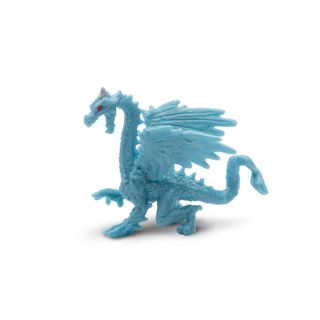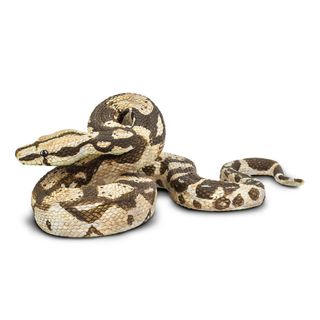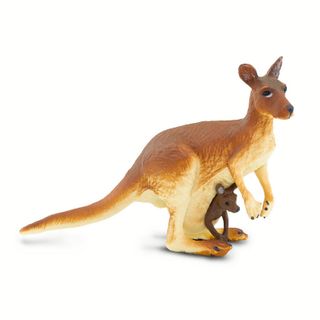
Description
Kaprosuchus shows that prehistoric ‘crocs’ were more diverse than crocodiles today. This extinct relative of modern crocodiles had tusk-like fangs that earned it the nickname “boar croc”. It lived in northern Africa during the late Cretaceous, 95 million years ago.
- Scientific Name: Kaprosuchus saharicus
- Characteristics: Kaprosuchus was a meat-eating crocodylomorph - the group that includes modern crocodiles. It had long broad jaws filled with pointed teeth, including enlarged tusk-like fangs. Its strong jaw muscles provided a powerful bite. The body of Kaprosuchus is unknown, but it was probably similar to other crocodylomorphs with four short legs and a long tail.
- Size and Color: This model is 8.25 inches long and 2 inches high. It has dark green and brown colored scales similar to modern crocodiles.
- All of our products are Non-toxic and BPA free
History
Kaprosuchus saharicus is known only from one almost complete 1.7-foot-long skull, described and named in 2009. The genus name means ‘boar crocodile’, in reference its three pairs of long fangs, one pair of which protrude upwards and are reminiscent of the tusks of a boar. The species name refers to the Sahara where it was discovered.
Kaprosuchus is a crocodylomorph - the group that includes modern crocodiles. The total length of the animal is estimated at 19 feet so it was a medium-sized predator. The position of its eye sockets, which face outwards and slightly forwards, suggest that it had binocular vision and hunted on land, not in the water like modern crocodiles. Kaprosuchus is therefore portrayed with vertical legs suited for walking on land, rather than sprawling legs suited for swimming.
- Recommended Age: 3+
- Size in cm: 21 L x
- Size in inches: 8.27 L x
- UPC: 095866300807








